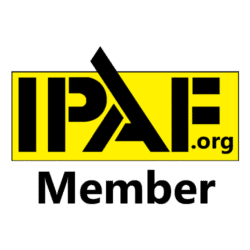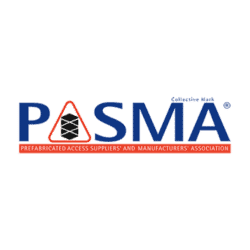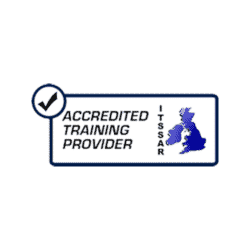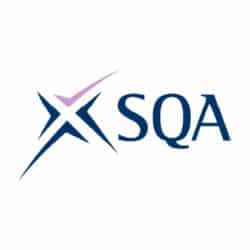Introduction
1.1. 2 Start Ltd (2 Start) is a provider of Apprenticeship and commercial, sector specific training, to the logistics sector.
1.2. 2 Start provides blended provision including online training and face-to-face practical training from (Portsmouth, Southampton, Worthing and Reading) in the South of England.
1.3. Nicky Hanson is the Designated Safeguarding and Prevent Lead (DSL). Nicky shall have overall accountability for the safeguarding of all stakeholders.
1.4. 2 Start is fully committed to providing a secure and safe environment for its apprentices and personnel to and to creating an environment where apprentices and staff feel protected and safe.
1.5. This policy details how 2 Start will fulfil its obligations to the UK Government Prevent Duty and CONTEST Strategy as detailed in the Counterterrorism and
Security Act 2015 and the Prevent Duty Guidance for Further Education Providers.
1.6. This policy details how 2 Start will maintain procedures and practices which safeguard and promote the welfare of all learners and staff by ensuring the safeguarding policy meets, wherever relevant, the Department for Education’s statutory guidance (Keeping Children Safe in Education).
1.7. In following this policy and all other relevant company policies and procedures based around health, safety, welfare, safeguarding and equality and diversity all 2 Start staff will contribute to the effective implementation and maintenance of all company policies and procedures.
1.8. This policy is just one element within the general arrangements that safeguard and promote the welfare and wellbeing of all Apprentices associated with the statutory obligations set out in the Education Act 2002
The Role of the Designated Safeguarding Lead
2.1. The Designated Safeguarding Lead (DSL) is accountable for the safeguarding and prevent practices and culture within the organisation. They are also the final decision maker regarding serious disclosure, issues, incidents or concerns and their external referral to Local Authority Designated Officer (LADO), Channel or other relevant body.
2.2. The DSL will ensure a minimum of 1 deputy is in place, who are trained and possess the skills and authority to take accountability for these final decisions, in their absence.
Monitoring and Review
3.1. 2 Start commits to a minimum of an annual policy review. This policy will also be reviewed in the following circumstances:
3.1.1. Trend or incident analysis within the company or stakeholders that pertains to policy, practice or procedure that requires review.
3.1.2. A change to the law, resulting in a change to policy, practice or procedure.
3.1.3. The publication of a relevant report by an external organisation that results in the requirement to review policy, practice or procedure.
3.1.4. Audit recommendations made by a relevant organisation such as Ofsted that require the review of policy, practice or procedure.
3.2. This policy was last reviewed on 4th January 2021 when the organisation’s obligations pursuant to the Prevent Duty were amalgamated into this policy.
3.3. This policy is scheduled to be reviewed by 3rd January 2023.
Policy Scope and Context
4.1. All references to “stakeholders” should be recognised as pertaining to learners, apprentices, customers, employers, employees, contractors, governors and volunteers.
4.2. All references to “Apprentices” include learners and vice versa.
4.3. All activities, conducted by any stakeholder, in the course of business, employment or the provision of learning with 2 Start, are expected to comply with this policy.
4.4. Recruitment activity for any stakeholder, shall be covered by this policy. For the avoidance of doubt, this shall include recruitment activity conducted in relation to employees, contractors, learners, customers, apprentices and volunteers. At all times, safer recruitment processes will be adhered to.
4.5. All references to “children”, means any person under the age of 18. A detailed definition is provided at:
4.5.1. Keeping children safe in education 2024: Part One
4.6. All references to “vulnerable adults” mean those that fall into the definition covered by the Care Act 2014; an individual, over the age of 18, at risk of abuse, neglect or exploitation, due to their need for support or personal circumstance. This includes those suffering; physical disability, frailty, learning difficulty, addiction, social or emotional issue or mental impairment. This definition is non- limiting.
4.7. All references to “terrorism” will mean “the use or threat which: involves serious violence against a person; involves serious damage to property; endangers a person’s life (other than that of the person committing the act); creates a serious risk to the health or safety of the public or section of the public; or is designed seriously to interfere with or seriously to disrupt an electronic system. The use or threat of such action must be designed to influence the government or an international governmental organisation or to intimidate the public or a section of the public and be undertaken for the purpose of advancing a political, religious, racial or ideological cause.”
4.8. All references to “extremism” will mean “Vocal or active opposition to fundamental British values, including democracy, the rule of law, individual liberty and mutual respect and tolerance of different faiths and beliefs, and/or calls for the death of members in our armed forces, whether in this country or overseas”.
4.9. All references to “violent extremism” will mean “the endorsement of violence to achieve extreme ends.”.
4.10. All references to “radicalisation” will mean“the process by which a person comes to support terrorism and forms of extremism leading to terrorism.”
4.11. As of December 2021, the UK threat from Terrorism and Extremism is “severe” which means a terrorist attack is considered to be likely.
4.12. 2 Start has a number of legal obligations pursuant to the Counterterrorism and Security Act 2015 and to report and general criminal activity to the police and to ensure that it does not provide a platform for the development and encouragement of extremist ideologies.
4.13. This policy aims to ensure compliance with 2 Start legal obligations as well as detailing how freedom of speech will be encouraged.
Statutory Requirements
5.1. When dealing with children, young persons or vulnerable adults, the following legislation is particularly pertinent:
5.1.1. Keeping Children Safe in Education 2019
5.1.2. Working Together to Safeguard Children 2018
5.1.3. Data Protection Act 2018
5.1.4. The Protection of Children Act 1999
5.1.5. The Safeguarding Vulnerable Groups Act 2006
5.1.6. The Equality Act 2010
5.1.7. Sexual Violence and Sexual Harassment Between Children in Schools and Colleges (guidance) 2018/ 2021
5.1.8. Learning together to be safe.
5.1.9. “Prevent Strategy” resources guide.
5.1.10. Tackling extremism in the United Kingdom.
5.1.11. Teaching approaches that help build resilience to extremism among young people.
5.2. 2 Start is committed to compliance with the appropriate legislation.
Policy Statement
6.1. 2 Start is fully committed to safeguarding the welfare, wellbeing and health and safety of all stakeholders and particularly children, young people and vulnerable adults.
6.2. 2 Start promotes the rights of all stakeholders, particularly children, young people and vulnerable adults; to be protected from harm, abuse, radicalisation, victimisation, extremism, exploitation and violence.
6.3. 2 Start aims to ensure that all stakeholders, particularly children, young people and vulnerable adults are protected and kept safe from harm while they are actively engaged in learning; and that they are supported in their understanding of how to keep themselves safe outside of the learning environment. See Young Persons risk assessment for measures put in place for 16 – 18 year old learners enrolled onto the apprenticeship scheme.
6.4. 2 Start is committed to maintaining procedures and practices which safeguard and promote the welfare of all learners and staff by ensuring the safeguarding policy meets, wherever relevant, the Department for Education’s statutory guidance (Keeping Children Safe in Education).
6.5. 2 Start utilises the 5 R’s; Recognition, Response, Reporting, Recording, Referral to manage Safeguarding and Prevent procedures.
Policy Aims and Objectives
7.1. It is unacceptable for any person to experience abuse, violence, discrimination, extremism etc. of any kind. This is particularly abhorrent if it involves a vulnerable group, such as children, young people or vulnerable adults.
7.2. 2 Start has the following organisational objectives with regards to Safeguarding and Prevention from Radicalisation:
7.2.1. To recognise that all stakeholders regardless of gender, religion, age, ethnic origin, disability, and sexuality, learning difficulties or any other grounds have a right of equal protection from all types of abuse, harm, exploitation and radicalisation.
7.2.2. To ensure that all reported concerns, issues or incidents are dealt with consistently, confidentially, empathetically, collaboratively and in a timely fashion.
7.2.3. To provide a comprehensive induction to all stakeholders that provides knowledge and skills needed to build confidence to identify those at risk of becoming vulnerable to abuse, and to be able to provide the support needed, should abuse occur.
7.2.4. To provide regular refresher training to all personnel around Safeguarding and Prevent Duty.
7.2.5. To comprehensively support our Learners and apprentices to understand British Values, Prevent Duty and ways they and others, may become vulnerable throughout their lives. To support their understanding of how to support themselves and others and how to raise a concern.
7.2.6. To ensure that all Learners and apprentices and others within scope of this policy understand their obligations pursuant to this policy and are committed to its implementation. This includes the parents of children and young people as part of our workforce or cohorts of Learners and apprentices.
7.2.7. To promoting this policy to and gaining commitment and engagement from, employers.
7.3. This policy will support the aims of the CONTEST Strategy, which are:
- To RESPOND to the ideological challenge of terrorism
- To PREVENT our stakeholders from being drawn into terrorism and provide context, support and advice.
- COLLABORATE with other sectors to ensure a cross multi-agency approach to addressing the risks posed as a result of the promotion of terrorist views.
7.4. To promote this policy to all stakeholder and third parties including employees, learners, apprentices and employers.
Policy Promotion, Engagement and 2 Start Prevention and Safety Measures
8.1. This policy is promoted by 2 Start in a number of ways:
- Comprehensive Induction Processes to Build Commitment
8.2. All employees, contractors, governors and volunteers will receive a comprehensive induction to the organisation. The induction will provide these groups with the skills, knowledge and behaviours required to support the aims of this policy, specifically:
8.2.1 Where and how to access the policy, procedures and salient documentation.
8.2.2 To implement processes to maximum effect with consistency.
8.2.3 To recognise and respond to safeguarding and Prevent concerns with consistency and empathy.
8.2.4 To support all stakeholders, particularly children, young persons and vulnerable adults to build resilience and confidence in reporting concerns.
8.3. All apprentices, learners and customers will be provided with the following information during induction:
8.3.1 Access to the organisational policies and procedures governing Safeguarding and Prevent.
8.3.2 Understanding of what Safeguarding is.
8.3.3 Understanding of what the Prevent Duty is.
8.3.4 Recognising situations that could make them vulnerable to harm.
8.3.5 A Code of Conduct for their behaviour.
8.3.6 Minimum expectations for those in power positions.
8.3.7 The identity and contact details of the Safeguarding Team (including the DSL) and how to report concerns.
8.3.8Contextualised scenario materials to develop understanding.
8.4. All stakeholder groups will be provided the following training as part of their induction process:
8.4.1 Equality and Diversity
8.4.1 Safeguarding
8.4.2 Prevent
8.4.3 Bullying and Harassment (incl. sexual harassment)
- Refreshment and Embedding of Knowledge, Skills and Behaviours – Building Commitment
8.5. All employees, contractors and volunteers undergo regular refreshment and continuous professional development (CPD), to ensure the relevance and appropriateness of their capabilities. Such CPD, will be in line with 2 Start’s CPD Policy or as a result of an identified need (Quality Assurance Process or trend analysis).
8.6. Apprentices’ knowledge, skills and behaviours will be continuously reviewed by their tutor. Continuous and additional support will be provided throughout the provision and curriculum, tailored to suit the individual progress and development of the respective Apprentice.
8.7. Safeguarding, Equality and Diversity, Prevent and British Values are embedded into the curriculum of all Apprenticeship programmes. All Curriculum Plans are regularly refreshed, taking account of apprentice, employer and tutor feedback.
- Engaging and Gaining Commitment from Employers
8.8. Employers are engaged around Safeguarding, British Values, Equality and Diversity and Prevent from the onset of the relationship. Employers are supported to understand how they can identify and support those at risk of abuse, radicalisation and exploitation.
8.9. 2 Start will assess the environment of the employer to ensure that it is appropriate for Apprentices and that the employer is committed to embedding a culture of safeguarding. In instances where the employer environment fails to meet these high expectations, 2 Start will provide the employer with a Risk Assessment, determining how the culture and environment can be strengthened, to the benefit of employees. The relationship will always be supportive.
8.10. Employers are required to regularly refresh their understanding of these concepts. 2 Start will ensure that employer understanding of any changes to policy, practices or procedure is captured and recorded and any and all shortfalls in understanding are met and resolved.
- Embedding Commitment
8.11. The policy and its procedures are available to personnel via the company intranet and all other stakeholders via the company website.
8.12. Concepts of mutual respect, tolerance and inclusivity are embedded into curricula and Assessors actively encourage discussion around these topics, including contextualised scenarios.
8.13. The DSL has extensive links with local, regional and national Safeguarding and Prevent boards. This information is disseminated to stakeholders via regular newsletters and interactive “theme” materials.
8.14 Apprentices are issued workbooks during their learning journey that support the aims and objectives of the policy and promote resilience to extreme narratives and protection from radicalising influences.
- Safer Recruitment
8.15. 2 Start recognises that to safeguard all stakeholders from harm, it is required to thoroughly and continually vet all contractors including volunteers and governors.
8.16. To safely recruit, 2 Start will:
8.16.1. Ensure that recruitment practice is fair and inclusive.
8.16.2. Thoroughly screen and check prospective personnel qualifications and suitability to work, prior to their appointment.
8.16.3. Undertake DBS checks at the appropriate level for all successful applicants. Personnel will not be permitted to commence work until a DBS status is determined and a Risk Assessment completed where appropriate.
8.16.4. Maintain records of all DBS details on a single, central register and ensure this is refreshed with a minimum regularity of 3 years.
8.16.5. Ensure that personnel involved in the recruitment and vetting of new personnel are fully trained and that this training is regularly refreshed.
8.16.6. That a system of governance and monitoring is in place to ensure that the safer recruitment practice is being followed and regular reports are provided to the Board.
- Online Safety and IT Usage – Strengthening Commitment
8.17. 2 Start recognises that the increase in online learning and the benefits of this medium of learning, increases the risk of harm to all stakeholders but particularly children, young people and vulnerable adults.
8.18. 2 Start has Acceptable Use Policies covering the use of IT equipment by all categories of employee Learners and apprentices.
8.19. 2 Start recognises its responsibility to educate Learners and apprentices to the risks online and to support the development of critical thinking skills to support Learners and apprentices to remain safe. Critical thinking skills are embedded into all programmes.
8.20. Safety online is embedded in all programmes within 2 Starts provision and reinforced by Assessors during progress reviews.
- Social Media – Building Resilience
8.21. 2 Start discourages the use of applications other than those platforms provided by 2 Start, for communication by personnel with Learners and apprentices. The exception to this is where there is a significant and material benefit to the quality of education delivered. Such contact should be preapproved by the Directorship and full transcripts provided for the LMS.
8.22. Unapproved contact of 2 Start Learners and apprentices by 2 Start personnel outside of the approved, internal learning platforms will be dealt with as gross misconduct in accordance with the Disciplinary Policy. This type of contact will be considered as an “abuse of position” in accordance with this policy and may also result in a referral to a LADO, the Police and a potential removal from the register of teachers.
8.23. Where inappropriate contact from personnel to Learners and apprentices via social media involves a child, young person or vulnerable adult, or contains explicit content, incitement to commit criminal acts, or achieves the definition of any form of abuse pursuant to this policy; 2 Start will immediately involve the police.
8.24. 2 Start however recognises that the use of these platforms by our Learners and apprentices and personnel is highly likely in their personal lives.
8.25. 2 Start recognises its role in educating these categories of persons around safety online.
8.26. Being safe online includes awareness of the risks associated with communicating via the internet.
8.27. References to social media include social networking sites (such as Instagram and Twitter), social communication applications (such as WhatsApp), blogging sites, vlogging sites, community sites (such as Pinterest), auction sites (such as eBay) and sales platforms (such as Facebook).
8.28. 2 Start acknowledges the difficulty in legislating for all these different platforms and consequently adopts overarching principles when using these platforms. These principles are embedded into the program curriculum. Online principles:
8.29. Careful Content. To always communicate on these platforms as if you were face to face. Avoid the use of ambiguous statements that could be misinterpreted. Do not swear or use inuendo. Be as careful in content online as you would be in person. Be polite and respectful.
8.30. Maintain confidentiality. Do not disclose things that should not be in the public domain. For personnel this includes adopting GDPR principles and avoiding referencing 2 Start or any learner. Learners and apprentices should avoid disclosing personal information such as their address, bank details etc.
8.31. Avoid the Secret. Certain applications allow communications to be completely anonymous. These situations represent a greater risk to children, young people and vulnerable adults.
8.32. Email. Private communications are safer when they are easily traceable. Email is a safer way to make sure you are communicating with someone genuine with good intentions.
Recognition of Vulnerability/ Safeguarding or Prevent Concerns (“Recognise – Including Definitions)
Abuse
9.1. Abuse is a form of mal- treatment that is inflicting either by causing harm or failing to prevent harm.
9.2. Abuse can occur in many settings. Some common settings of occurrence are; familial, institutional, individual and in groups.
9.3. 2 Start recognises that abuse can occur to anyone in any situation but identifies the following clear types of abuse that can occur:
9.3.1. Physical
9.3.2. Emotional
9.3.3. Sexual
9.3.4. Neglect
9.3.5. Financial
9.4. Abuse does not need to fall solely into one of these categories. Often an individual suffering abuse may experience several different types of abuse.
Physical Abuse
9.5. Physical abuse means causing harm, or failing to prevent harm, to an individual’s person. Where individuals have specific care needs, this can include a failure to properly restrain or a misuse of medication.
9.6. This includes but is not limited to:
9.6.1. Poisoning
9.6.2. Burning
9.6.3. Hitting
9.6.4. Scalding
9.6.5. Drowning
9.6.6. Suffocating
9.6.7. Shaking
9.7. Signs that someone may be suffering physical abuse may be:
9.7.1. Unexplained bruising
9.7.2. Flinching when approached
9.7.3. Withdrawal or a change in behaviour
9.7.4. Aggressive behaviour and temper outbursts
9.7.5. Injuries inconsistent with the explanation
9.8. Abuse can be committed by persons of any demographic or age group against any demographic or age group.
9.9. 2 Start recognises that abuse can be perpetrated by those with institutional power and accordingly has robust preventative measures in place (discussed later) and adopts an “in can happen here” approach. 2 Start also maintains strong relationships with LADO and has and effective reporting procedure in place (discussed later).
9.10. It can be difficult for individuals, particularly children, young people, and vulnerable adults to talk about abuse. All personnel are trained to listen without judgement or pressure and to provide an empathetic, supportive environment for disclosure.
Sexual Abuse
9.11. Sexual abuse involves the forcing or enticement of an individual (child or adult), to take part in sexual activities. This can include violence, but equally can be an act of coercion that restricts the individual’s ability to provide informed consent.
9.12. Sexual abuse includes but is not limited to:
9.12.1. Rape
9.12.2. Penetration with an object
9.12.3. Kissing
9.12.4. Oral intercourse
9.12.5. Masturbation
9.12.6. Looking at pornographic material or sex acts.
9.13. Sexual abuse can be committed by persons of any gender and any age group towards any gender and any age group.
9.14. 2 Start takes an “it can happen here” approach to addressing sexual abuse/ assault and to the development of curriculum and education around this topic.
9.15. Sexual abuse can be perpetrated by those with institutional power. 2 Start again advocates the “it can happen here”, approach and provides for many prevention measures referred to later in this policy.
9.16. 2 Start works closely with a counselling service that can provide confidential and specialist advice and support around sexual abuse.
9.17. Signs that a person (adult or child) is being sexually abused:
9.17.1. Avoidance of a specific person. In cases of familial child sex abuse, this can include a family member.
9.17.2. Sexually inappropriate behaviour to their individual developmental stage.
9.17.3. Physical problems include medical problems with their genitals or pregnancy.
Emotional Abuse
9.18. Occurs where there is persistent emotional ill treatment or neglect or rejection.
9.19. It causes severe and adverse effects on a person’s behaviour and emotional, resulting in low self-worth.
9.20. Some level of emotional abuse is usually present in all forms of abuse.
9.21. Emotional abuse can involve, but is not limited to:
9.21.1. Overprotectiveness that limits the individual to learn and experience
9.21.2. Silencing them
9.21.3. Inference of conveyance that the individual is unloved or worthless
9.21.4. Bullying (face to face/ cyber)
9.21.5. Causing fright to fear consequence
9.21.6. Exploitation
9.21.7. Expectations placed on an individual beyond their understanding or developmental capability
9.22. Signs that an individual is being emotionally abused include, but are not limited to:
9.22.1. Confusion
9.22.2. Developmental delay
9.22.3. Self-harm
9.22.4. Personally over-critical
9.22.5. Socialisation issues
9.22.6. Behaviour change
Neglect
9.23. Is the persistent or severe failure to meet a vulnerable person basic physical and/or psychological needs. It will result in serious impairment of the person’s health or development.
9.24. Neglect may include, but is not limited to:
9.24.1. Failure to provide sustenance
9.24.2. Failure to provide care needs
9.24.3. Failure to adhere to medical practitioners’ guidance
9.24.4. Failure to provide housing or removal of housing
9.25. Signs that an individual is being neglected can be:
9.25.1. Dishevelled and unkempt appearance
9.25.2. Appears dirty or smelly
9.25.3. Is hungry; perhaps steals food
9.25.4. Is constantly tired
Psychological Abuse
9.26. Psychological abuse involves the regular and deliberate use of a range of words and non-physical actions used with the purpose to manipulate, hurt, weaken, frighten a person mentally and emotionally, and influence a person’s thoughts within their everyday lives.
9.27. Psychological Abuse can include:
9.27.1. Gaslighting
9.27.2. Name calling
9.27.3. Insulting the person
9.27.4. Threats against the person or a threat to take something away from the person
9.27.5. Mocking
9.27.6. Isolating the person
9.27.7. Ignoring the person
9.27.8. Excluding the person.
9.28. Signs that an individual is being psychologically abused can be:
9.28.1. Isolation
9.28.2. Withdrawal from support networks
9.28.3. Deference
9.28.4. Unexplained paranoia
9.28.5. Ambivalence about care giver
9.28.6. Excessive tiredness
9.28.7. Low self esteem
Financial Abuse
9.29. It is a misconception that financial abuse always involves fraud or theft. In fact, financial abuse is often subtle and can be therefore very difficult to detect.
9.30. Financial abuse is often used as part of other forms of abuse including domestic violence and psychological abuse.
9.31. Financial abuse may look like:
9.31.1. Denying access to personal finances
9.31.2. Tricking someone into bad investments
9.31.3. Borrowing money or property and not returning it
9.31.4. Forcing the sale of assets
9.32. Signs of Financial abuse include:
9.32.1. Inability to access bank accounts
9.32.2. Lack of money to pay for essentials
9.32.3. Unusual payments in bank statements
Radicalisation
9.33. The legislation is not prescriptive on the possible signs of radicalisation, although it is assumed that the most obvious signs will be extreme changes in behaviour, which will vary in its obviousness from case to case. Possible indicators are:
9.33.1. General changes in demeanour, behaviour or viewpoint
9.33.2. Changes in faith
9.33.3. Becoming involved with a narrow view of politics
9.33.4. Isolation
9.33.5. Expressing views that are “them” and “us” 9.33.6. Association with known terrorist organisations.
9.34. 2 Start recognises some Apprentices may be in vulnerable social and domestic situations to include (mental health issues, single parent families, involvement in gangs) these Apprentices may be at greater risk of radicalisation than other Apprentices.
Respond
Dealing with Concerns
10.1. All personnel are trained to respond to an initial disclosure, complaint, incident etc. in an appropriate manner and in line with company Safeguarding Processes.
10.2. All personnel will:
10.2.1. Make the disclosure/ complainer feel as comfortable as possible without crossing personal boundaries.
10.2.2. Will listen effectively to the situation. Any interviews etc will be completed by trained personnel at a later stage in this process.
10.2.3. Remain calm.
10.2.4. Explain the Safeguarding Process to the individual to reassure them of how things will be dealt with.
10.2.5. Avoid making unrealistic promises around confidentiality.
10.3. Where appropriate, a Safeguarding Officer of the same gender etc. will be made available.
Report and Record
Reporting Concerns
11.1. The DSL will ensure processes are in place to record all disclosures, issues, incidents and concerns, are recorded in a central, confidential and GDPR compliant central location.
11.2. All disclosures, incidents, issues and concerns must be reported. This applies in all situations and remains important even where the eventual decision of the organisation is to take no further action.
11.3.When recording a disclosure, incident, issue or concern, the Safeguarding Officer or front-line personnel should:
11.3.1. Record all conversations exactly as they are stated. This should use the exact language of the individual, including their turn of phrase, swear words and event descriptions.
11.3.2. Include factual observations where appropriate. This is likely to be required when reporting concerns, issues or incidents, or in situations where a disclosure is made and there are concerns relating to self-harm or continued harm against that individual. Factual observations should be just that. Try to avoid including personal opinions. Include only symptoms, such as visible bruises or withdrawn behaviour. Avoid interpreting these symptoms as supporting the disclosure.
11.3.3. Notify the Designated Safeguarding Lead immediately following the conversation.
What do you need to do if you have a concern?
Stage 1: If you witness or hear something which is of concern, or you are subject to something which concerns you, this needs to be brought to the attention of the Nominated Person at the relevant company depot (Depot Manager).
Stage 2: The Nominated Person may seek advice if required regarding the matter from the DSL (Nicky) and if this is a matter which requires further action, the Safeguarding QR code may be used as an official line to report and document the concern.
Stage 3: Nicky (DSL) will review the concern and meet with the relevant parties to discuss the matter further. This will be documented and may be referred to at a later date.
If the concern requires any support from the company or intervention from outside professional agencies, pastoral support will be sought either by the DSL or the individual themselves.
If the threat is an immediate threat of harm to the individual or others in their lives, she will contact the relevant outside agencies including Channel or the local police to notify them and gain further advice.

Decision Making
11.4. On receipt of a Safeguarding record, the DSL will review the matter and determine the course of action to be taken. Actions can include, pastoral intervention, further investigation, no further action (monitoring) and serious external referral.
11.5. In all instances, the DSL will ensure that all decisions will prioritise the need to safeguard the individual from harm. In serious situations, this may involve the referral to a third-party body, against the wishes of the disclosing individual.
11.6. The DSL will ensure arrangements are considered when dealing with a child, young person and vulnerable adult.
11.7. The DSL will never make a decision that stretches the organisational resources (including personnel) beyond their capacity or capability. This measure ensures that individuals are always provided with the best care and support, by experts and the organisation avoids detailed specific involvement in matters for which they have no expertise.
11.8. The DSL will consider all the facts before making a decision on the appropriate course of action.
11.9. The most common decisions are: take no action, pastoral intervention, further investigation or a referral to an external body.
Take No Action
11.10. The DSL may decide that no action is required. If no action is determined, the DSL will ensure that the Safeguarding Record is centrally recorded and will confirm whether further monitoring of the situation is required.
11.11. Where monitoring is required, the DSL will ensure the appropriate arrangements are in place.
Pastoral Intervention
11.12. Pastoral Intervention covers a wide range of actions and is the most common action taken.
11.13. Pastoral intervention offers individuals support for a situation or group of situations that is causing them to currently be vulnerable to abuse or harm. The intervention will assist them with; obtaining financial support, receiving education, obtaining help with welfare needs, obtaining counselling or other therapy, or receiving medical support.
11.14. Pastoral interventions are ordinarily completed via an external referral to an approved third party. The DSL will make the appropriate arrangements with the individual (their parents if required) and the referring company.
11.15. The DSL will ensure that a central record is kept of the intervention.
Further Investigation
11.16. The DSL may decide that further investigation of the situation is required. It should be noted that in cases where a serious referral is required, the referral body such as the Police or LADO will conduct an investigation independently. Before deciding whether further investigation is needed, the DSL should give consideration to the seriousness of the situation, so has not to commence an investigation that could ultimately prejudice the investigation of a body with more authority.
11.17. Further investigation can be either formal or informal.
11.18. Informal investigation may be a chat with the individual or a review of a particular ILP or learning plan.
11.19. In the case of further formal investigation for potentially serious issues, the DSL will ensure:
11.19.1. A full record of the investigation is centrally stored.
11.19.2. Confidentiality (where disclosure is not required by law) is maintained.
11.19.3. All individuals are treated with respect and in accordance with The Equality and Diversity Policy and in within the aims of this policy.
11.19.4. All statements made are recorded in the actual language of the speaker and that in no circumstance are the personal views of the investigation team considered as part of the decision-making process.
11.20. The DSL will review the output of the investigation and consider the appropriate action to take.
Refer
12.1. In the most serious of cases, the DSL may be required to make a serious external referral. These types of referrals are detailed below.
Allegations Relating to the Abuse of Position of Those in Authority
12.2. The company may receive allegations that relate to the abuse of a position or power. These allegations can relate to positions such as medical practitioners, carers, educational professionals, policepersons etc.
12.3. Whilst every effort is made to safeguard Learners and apprentices in the care of 2 Start, it may be the case that allegations are made relating to the abuse of position of our personnel. In this instance, personnel refers to employees, associates, subcontracts, governors and volunteers.
12.4. In all instances of Abuse of Power, the DSL will make a referral to the Local Authority Designated Officer (LADO). The LADO should be alerted in all instances of allegation that a person in a position of power has:
12.4.1. harmed, or behaved in a way that may have harmed a person in their care.
12.4.2. Committed a criminal offence against a person in their care.
12.4.3. Caused a person in their care to feel at risk.
12.5. The purpose of the LADO is to ensure effective recording of allegations of abuse against those in positions of power who work with children, young persons or vulnerable adults. They act as an effective conduit between the provider and other organisations such as the Police and medical professionals.
12.6. The LADO should be notified within 24 hours of an allegation being paid. The DSL retains accountability for this notification. Whilst the LADO does not investigate the case, they should be notified of the allegation prior to the investigation commencing. Thereafter, LADO will seek to provide advice and guidance to 2 Start on the best way to commence investigations.
12.7. On referral, the LADO will determine whether the allegation meets the threshold for their involvement, so where there is doubt, 2 Start will refer the matter to LADO in the first instance.
12.8. The LADO may determine that the allegation requires investigation by the Police. If this is the case, they will provide this advice. No internal investigation should begin until the LADO has made this determination.
12.9. In cases concerning an allegation relating to 2 Start personnel (including employees, contractors and volunteers), the alleged perpetrators resignation does not bring the matter to a close. A full investigation should still be carried out. Whilst matters relating to the alleged perpetrators contract of employment are for 2 Start to determine internally, no settlement agreement will remove the co-operation of 2 Start from any investigation to determine allegations of abuse of power against its personnel.
Allegations of Abuse Against a Third Party
12.10. 2 Start is committed to upholding its obligations to the legislation detailed in this policy and to the moral obligations of providing education.
12.11. 2 Start may receive allegations of physical or sexual abuse from a child, young person or vulnerable adult.
12.12. In these circumstances, 2 Start has a legal obligation to protect them from harm. This obligation includes the involvement of Local Authorities, the Police, the Ambulance Service and Social Services.
12.13. The Designated Safeguarding Lead will decide on the whether the situation requires the involvement of a third-party authority and will fully cooperate with any third party notified thereafter.
Referrals Around Peer Abuse
12.14. 2 Start operates an “it can happen here” approach to peer on peer abuse and recognises that smaller disclosures of bullying, sexting, social media abuse etc. can be symptoms of a much bigger pattern of abuse between peers.
12.15. 2 Start personnel are trained to appropriately encourage conversations around peer abuse and support individuals following disclosure.
12.16. 2 Start understands that often the fear of formality can deter Learners and apprentices from reporting peer abuse. 2 Start values the voice of the learner and will (where it is appropriate to do so i.e.) support their wishes in dealing with matters.
12.17. “Appropriateness” in this instance refers to the seriousness of the circumstance and the individual learner’s age and capacity to understand the nature of the abuse. For the avoidance of doubt, in all situations 2 Start will prioritise the need to protect Learners and apprentices from harm.
12.18. Given the range of situations of that could occur under this title, 2 Start acknowledges that methods of addressing abuses can range from informal discussions with Learners and apprentices to expulsion from programme, or even the referral to the police.
12.19. In all instances of peer-on-peer abuse, the reporting process should be followed. The DSL will have accountability for deciding the best way to deal with the individual situation.
Referrals to Channel
12.20. The DSL may decide to refer to the Channel Process for further support. Where a referral is made, the DSL will attend the relevant meetings.
12.21. A referral to the police may be made in situations where there is an immediate fear of harm to the individual or others within their lives.
Key Contacts
Nicky Hanson is the Designated Safeguarding Lead (DSL) for 2 Start and has a team of deputies across the organisation’s geographical reach (Portsmouth, Southampton, Worthing and Reading), that comprise the safeguarding and prevent team.
The team can be contacted via email at:
nicky@2start-training.com
or by telephone on the safeguarding number:
07984138732
Any apprentice or employer that wishes to report a safeguarding concern may contact the team on the above details. Alternatively, any concerns may be reported to the employer’s Account Manager or apprentice’s Instructor or Assessor who will correspond with the DSL.
Policy Approval
Review Date: 25/08/2024
Next review update: 25/08/2025
Name: Caroline Moon
Position: Finance Director










